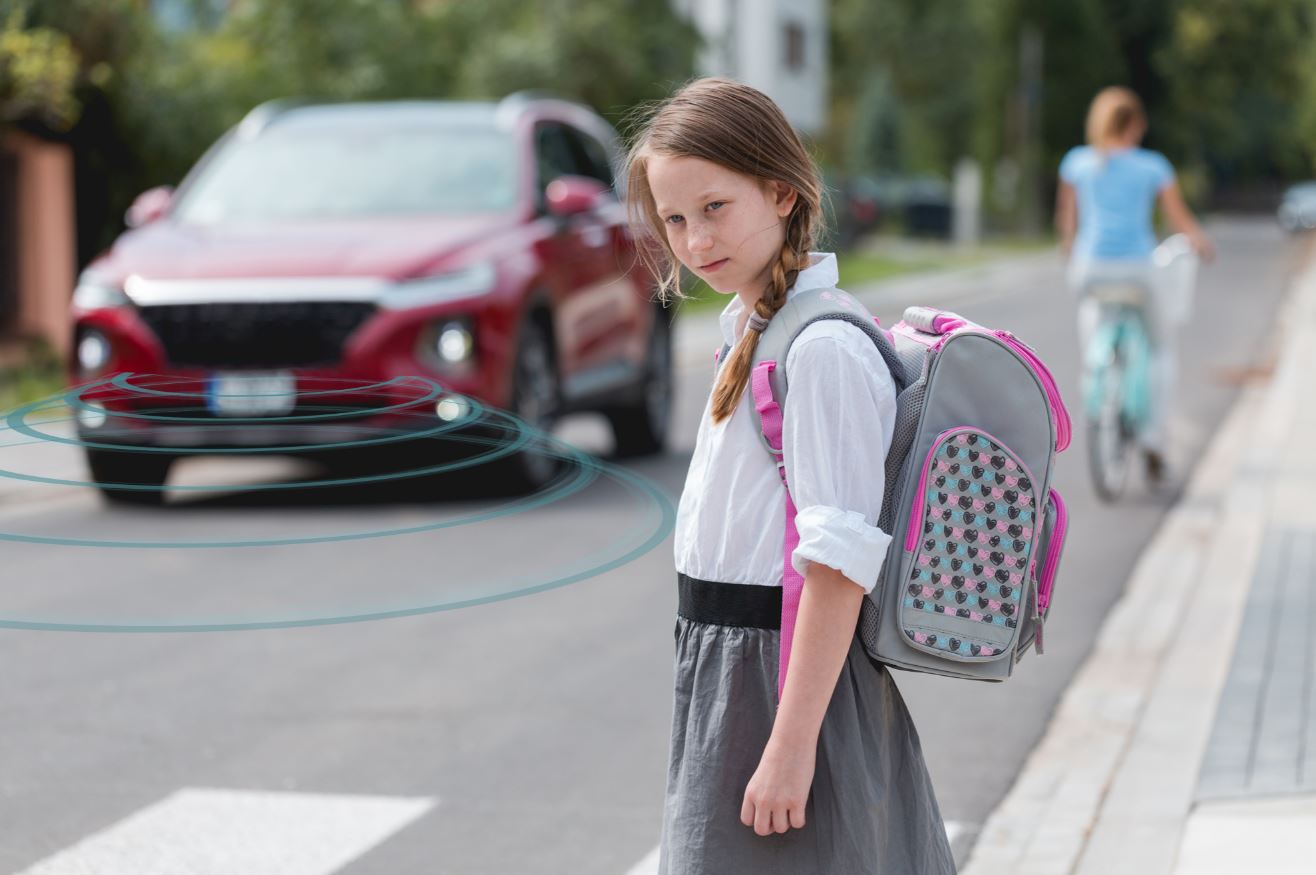
Abstract
The number of electric vehicles on the road increases exponentially every year. Due to the quieter nature of these vehicles when operating at low speeds, there is significant concern that pedestrians and bicyclists will be at increased risk of vehicle collisions. This research explores the detectability of six electric vehicle acoustic additive sounds produced by two sound dispersion techniques: (1) using the factory approach versus (2) an excite transducer-based system. Detectability was initially measured using on-road participant tests and was then replicated in a high-fidelity immersive reality lab. Results were analyzed through both mean detection distances and pedestrian probability of detection. This research aims to verify the lab environment in order to allow for a broader range of potential test scenarios, more repeatable tests, and faster test sessions. Along with pedestrian drive-by tests, supplemental experiments were conducted to evaluate stationary vehicle acoustics, 10 and 20 km/h drive by acoustics, and interior acoustics of each additive sound.
Project Highlights
- This research compared aural participant vehicle detection from 16 participants in two environments: an acoustic immersive reality lab and the Virginia Tech Transportation Institute Smart Road. Tests were initially conducted on the Smart Road and then replicated in the lab environment using 3D sound field recordings taken on the Smart Road.
- An innovative bonded transducer acoustic vehicle alert system was developed and compared to a modified factory warning system through objective regulatory tests and aural participant detectability.
- Four new warning sounds were developed based on previous research efforts. Warning sounds tested the effectiveness of 1 and 2Hz modulation rates and high and low frequency emphasis.
- Results from this study were presented at the Symposium on Transportation Noise and Vibration held at Penn State and will be presented at the Acoustical Society of America Meeting in December 2022 in Nashville Tennessee.
- This research project generated a number of media mentions. Links below:
https://www.eurekalert.org/news-releases/935288
https://techxplore.com/news/2021-11-adding-electric-vehicles-pedestrian-safety.html
https://www.eurasiareview.com/01122021-adding-sound-to-electric-vehicles-improves-pedestrian-safety/
https://www.azocleantech.com/news.aspx?newsID=30736
https://www.earth.com/news/electric-vehicles-are-too-quiet-for-pedestrian-safety/
https://www.studyfinds.org/adding-sound-electric-cars/
https://www.cittimagazine.co.uk/comment/adding-sound-to-evs-improves-pedestrian-safety.html
https://oversixty.com.au/entertainment/technology/adding-noise-to-electric-cars-for-safer-driving
Final Report
EWD & T2 Products
• The results from this research will inform, as appropriate, materials in Dr. Roan’s classes moving forward.
• Michael Beard; MS; Mechanical Engineering; Thesis: An Evaluation of Laboratory and Test Road Environments and Electric Vehicle Warning Sounds and Systems, July 2022
Student Impact Statement(pdf): One Master’s student in Mechanical Engineering at Virginia Tech received funding under this project. This file contains a statement by Michael Beard as to the impact this project had on his education and workforce development.
Presentations/Publications
Beard, M., Miller, M., Neuratuer, L., & Roan, M. (2022). Final Report for Safe-D Project 05-086: A data driven approach to the development and evaluation of acoustic electric vehicle alerting systems for vision impaired pedestrians. Safe-D UTC.
Neurauter, M. L., Roan, M., Miller, M., Beard, M., and Moore, D. (2021). Continued Evaluations of Additive Sounds and their Influence on Electric Vehicle Detectability by Pedestrians. Paper presented at the Society of Automotive Engineers Noise & Vibration Conference, Grand Rapids, MI.
Roan, M., Neurauter, L., Beard, M., & Miller, M. “Electric Vehicle Additive Warning Sounds: Results from participant tests both on-road in in an immersive audio environment”, To be submitted to the Journal of the Acoustical Society of America. (Submitted)
Roan, M., Neurauter, L., Beard, M., & Miller, M. (2021). Electric vehicle additive sounds: Detection results from an outdoor test for sixteen participants. Acoustical Society of America Meeting, Seattle, WA, November 29-December 3, 2021. Acoustical Society of America Journal, 150(4), A95-A95.
Roan, M., Neurauter, L., Beard, M., & Miller, M. (July 18, 2022), Electric Vehicle Additive Warning Sounds, Governmental Regulations and Implementations, Special invitation: 2022 Transportation Noise and Vibration Symposium, Penn State University.
Roan, M., Neurauter, L., Beard, M., & Miller, M. (2022). Electric vehicle warning sounds: On road and immersive audio detection results for 20 subjects. The Journal of the Acoustical Society of America, 152(4), A121-A121.
Final Dataset
The final datasets for this project are located in the Safe-D Collection on the VTTI Dataverse; DOI: 10.15787/VTT1/1ICTSN
Research Investigators (PI*)
Mike Roan (VTTI/VT)*
Luke Neurauter (VTTI/VT)
Marty Miller (VTTI/VT)
Doug Moore (GM)
Project Information
Start Date: 2020-11-01
End Date: 2023-02-01
Status: Complete
Grant Number: 69A3551747115
Total Funding: $550,215
Source Organization: Safe-D National UTC
Project Number: 05-086
Safe-D Theme Areas
Automated Vehicles
Connected Vehicles
Safe-D Application Areas
Vulnerable Users
Infrastructure Technology
Performance Measures
Planning for Safety
Vehicle Technology
More Information
Sponsor Organization
Office of the Assistant Secretary for Research and Technology
University Transportation Centers Program
Department of Transportation
Washington, DC 20590 United States
Performing Organization
Virginia Polytechnic Institute and State University
Virginia Tech Transportation Institute
3500 Transportation Research Plaza
Blacksburg, Virginia 24061
USA
